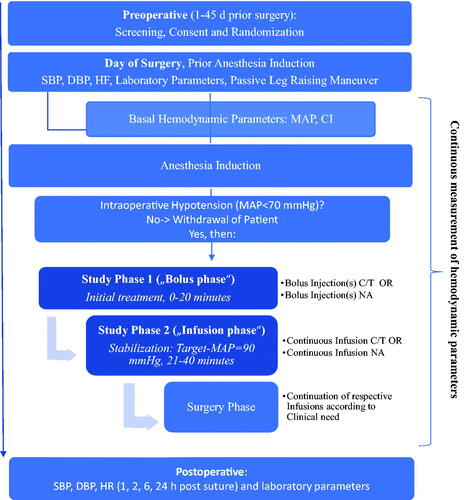Figures & data
Figure 1. Schematic flow diagram of study. Intraoperative hypotension is defined as MAP <70 mmHg. The dosages of C/T or NA are adjusted according to body weight (study phase 1) or follows the clinical effect (Target MAP = 90 mmHg) (study phase 2). Additional bolus injections of study medication are given at MAP <70 mmHg in study phases 1 and 2. Measures for hemodynamic stabilization (volume, administration of catecholamines, positioning, etc.) will be taken as required. The hemodynamic effects will be captured in real time by advanced monitoring: Mean Arterial Pressure, Systolic Blood Pressure, Diastolic Blood Pressure, Stroke Volume (Index), Heart rate, Systemic Vascular Resistance (Index), dP/dtmax. Stroke Volume Variation. Laboratory parameters are: creatinine, GFR (calculated), troponin; blood gas analysis: pH, base excess, lactate (blood), potassium. Abbreviations: C/T, Cafedrine/Theodrenaline; NA, Noradrenaline; PLR, passive leg raising maneuver; MAP, mean arterial pressure; SBP, systolic blood pressure; DBP, diastolic blood pressure; HR, heart rate.

